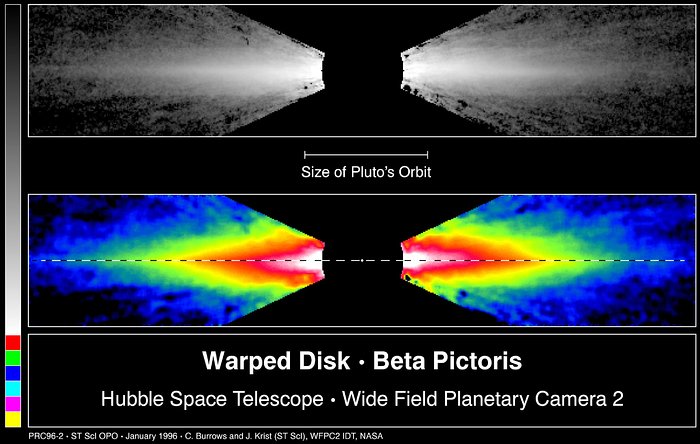Warped Disc around Beta Pictoris
This image from the Hubble Space Telescope shows for the first time the inner region of a 200-billion mile diameter dust disk around the star Beta Pictoris.
Top Image
This is a visible light image of the disk, which appears spindle-like because it is tilted nearly edge-on to our view.
The disk is made up of microscopic dust grains of ices and silicate particles, and shines by reflected light from the star.
Bottom Image
False-color is applied through image processing to accentuate details in the disk structure.
Hubble reveals that the pink-white inner edge of the disk is slightly tilted from the plane of the outer disk (red-yellow-green) as identified by a dotted line.
A simple explanation is that a large planet is pulling on the disk. It is not possible to see the planet directly because it is close to the star, and perhaps a billion-times fainter.
Credit:Chris Burrows, Space Telescope Science Institute (STScI) the European Space Agency (ESA), J. Krist (STScI), the WFPC2 IDT team, and NASA
About the Image
About the Object
| Name: | Beta Pictoris, IRAS 05460-5104 |
|---|---|
| Type: | Milky Way : Star : Circumstellar Material : Planetary System |
| Distance: | 70 light years |
| Category: | Exoplanets |
Colours & filters
| Band | Wavelength | Telescope |
|---|---|---|
| Optical B | 439 nm |
Hubble Space Telescope
WFPC2 |
| Optical V | 555 nm |
Hubble Space Telescope
WFPC2 |
| Infrared I | 814 nm |
Hubble Space Telescope
WFPC2 |
